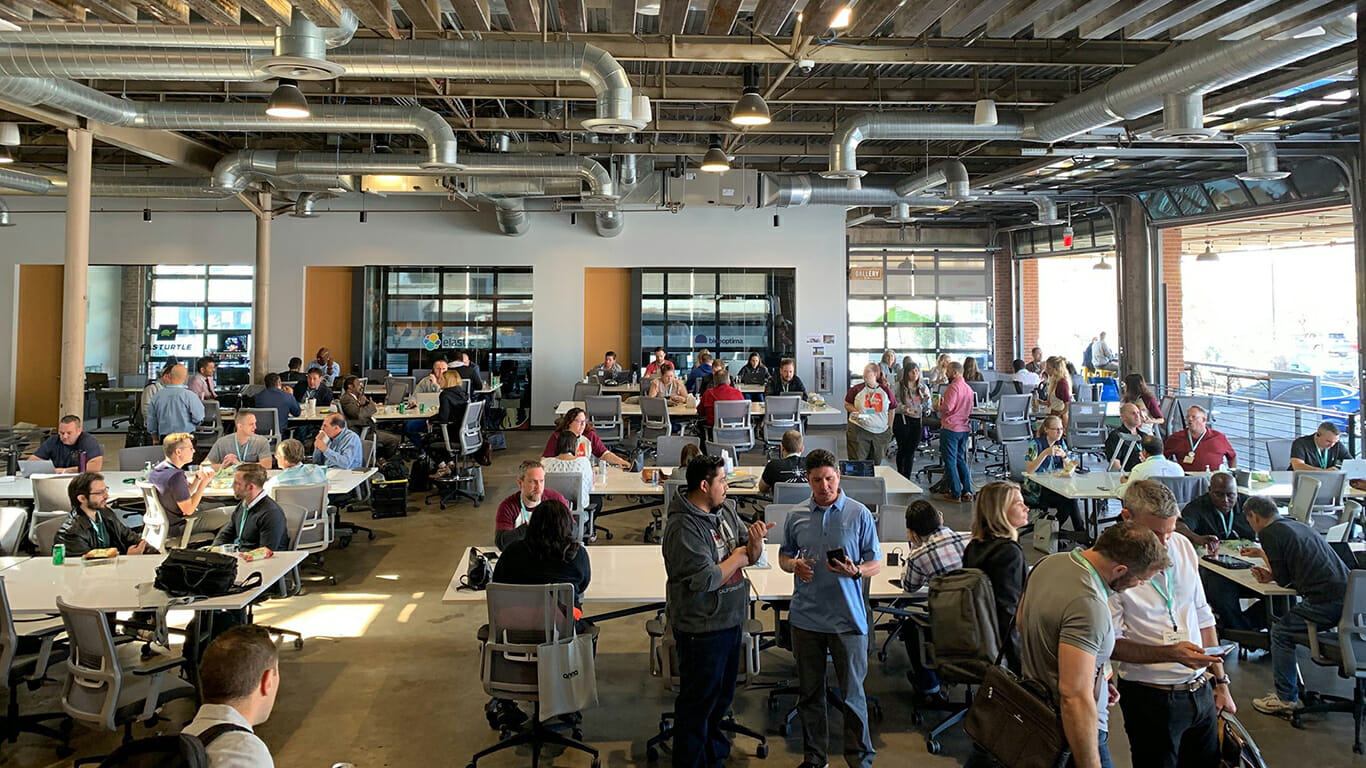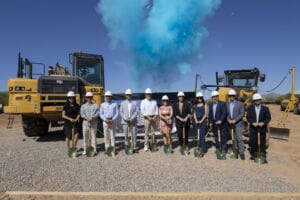As a technique, adaptive reuse is practical. It prevents waste from demolishing an entire structure and can give new life to a perfectly good preexisting building that provides function and, oftentimes, historical significance, particularly when it comes to adaptive reuse in Phoenix.
LEARN MORE: 7 Downtown Phoenix housing developments under construction
Some Phoenix adaptive reuse projects are easier than others. For instance, converting an office building into a residential property is difficult because of the logistics of rerouting utilities. Whereas repurposing a historic church into a restaurant or event venue can easily be achievable while still maintaining the most admirable aspects of the building.
To the Warehouse District, the community immediately south of Downtown Phoenix, adaptive reuse led to the need and, ultimately, the creation of the Warehouse District Council, led by a board of business owners with a vested interest and passion for the area.
Here is a handful of Phoenix Community Alliance Members who’ve utilized adaptive reuse and restored institutional landmarks into unique places of business and share what they’ve done to honor the heritage of each of those places.
Multistudio (521 S. 3rd Street #100) – Architecture and Design Studio
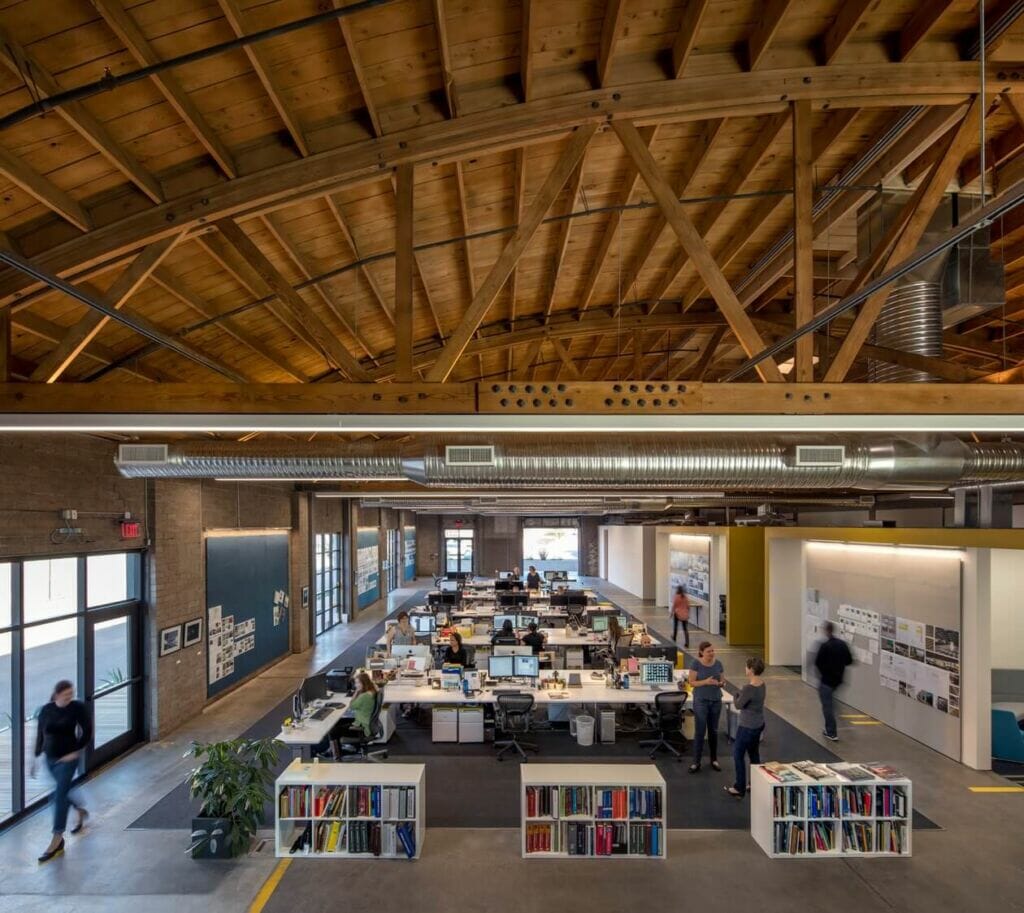
What was previously known as a paper distribution building in 1949 is now an office space that houses Multistudio, a cutting-edge architecture firm whose practice includes a mixture of interiors, branding, and graphic design. The firm maintains the building’s historic character while engineering a customized space for creativity and collaboration.
A focal point of that vision transformed the building’s former loading dock into a communal gathering space, and the dock eventually became the “The Pit.” Multistudio describes this sunken-in area where pallets were once moved back and forth as the district’s “living room” to host business and community meetings.
In addition to their own offices, other Multistudio adaptive reuse renovations in the Warehouse District include the WebPT and Equality Health facilities, as well as two upcoming projects at Buchanan and 3rd Street.
What the owners have to say:
“Our studio’s move Downtown furthered our commitment to being part of making the urban fabric of Phoenix. The large garage doors of the loading dock remain intact as interior shades, while the glazing of the openings visually connects the studio to the street by day. Each unique element, interwoven together, maintain the historic character of the building and encourage ongoing discourse for the continuous evolution of the quality of our city.” –Krista Shepherd, Principal, Multistudio
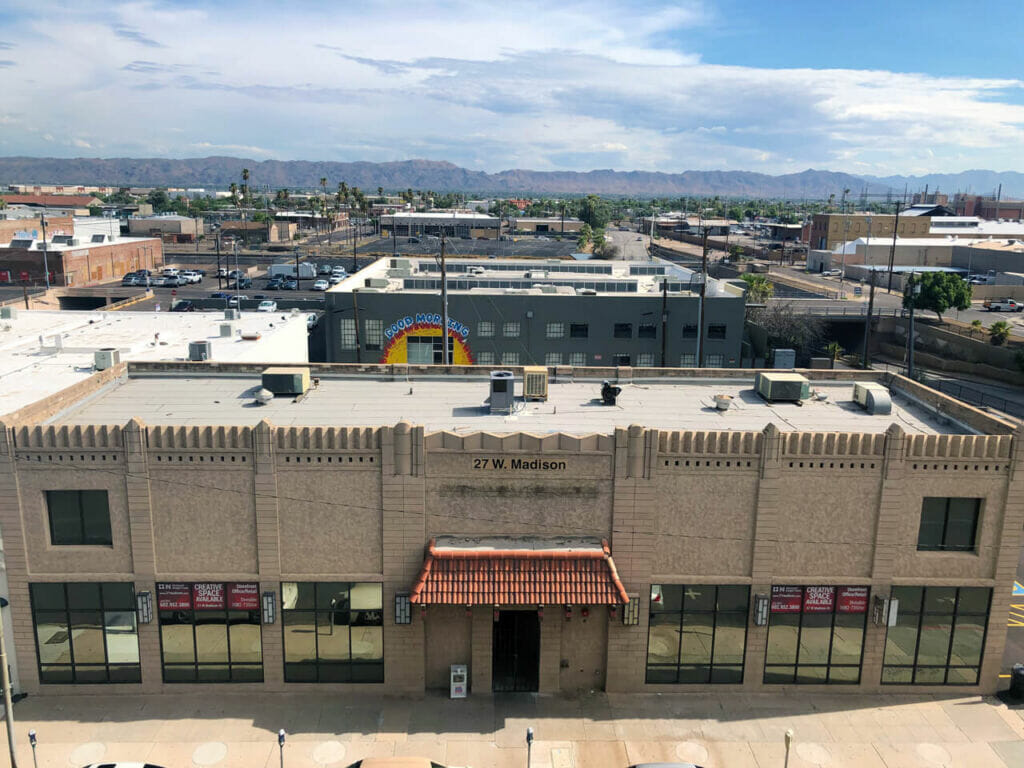
Sing High Building (27 W. Madison Street) – Office Space & Potential Residential Development
Over time, a site’s function changes to the evolving needs of the area. In 1981, the Sing High Chop Suey House operated immediately west of the Superior Court Complex, offering staple Cantonese dishes.
Initially constructed in 1931, the building first functioned as a gentlemen’s boarding house. After the restaurant bought the former residences, renovations removed interior rooms to add an expansive dining hall on both floors.
When Sing High closed in late 2018, the new owners at Hansji Corporation looked into options that could occupy the vacant space, including potential dining and retail options. The back of the building also included a separate one-story 4,000 square-foot space that Downtown Physical Therapy quickly filled in July 2019.
Almost three years later, Hansji is exploring possible developments such as a hotel or apartment complex. But any project would prioritize preserving the original building and exterior elements to incorporate into a proposed design.
In the meantime, the converted 9,700-square-foot historic two-story office and retail space remains ready for lease for tenants with a vision.
What the owners have to say:
“[For the Sing High Building] It’s about keeping a good roof because we’re preserving the walls and roof structure. We have committed to the City [of Phoenix] that we’re going to preserve and protect the building.” –Billy Shields, Partner, Hansji Corporation.
Warehouse 215 (215 E Grant Street) – Event Venue
When Heather Lennon, the CEO of Imagine General Contracting and Development, purchased Warehouse 215 in 2022, remodeling entailed peeling back layers of additions and accentuating the building’s century-old character. Built in 1918, the Bell Laundry Building operated as a commercial laundry facility until 1999, when its function then shifted to an event venue and art gallery.
Much of the upgrades included providing a more open floor plan by removing unnecessary rooms, walls, and drywall to expose the original brick walls of the laundromat. The result showcases Lennon’s personalized touches, including a repurposed Phoenix Suns court table, six-foot tall crystal chandeliers, and a 1950s-era bank vault converted into a humidor for Raconteuse Cigars, her cigar business.
With a capacity of 2,555 occupants, the building can now hold double the visitors in the venue. During Super Bowl LVII, Lennon showcased the remodeled space for parties.
What the owner has to say:
“Saving the history of Phoenix one historic building at a time is one of our tenets. Imagine Development feels strongly about opening private spaces to the public to serve the community. Opportunities have included partnerships with Dress for Success, United Way, and Maricopa County Health Services, where we are proud to have vaccinated over 5,000 residents.” –Heather Lennon, CEO, Imagine General Contracting and Development.
More Examples
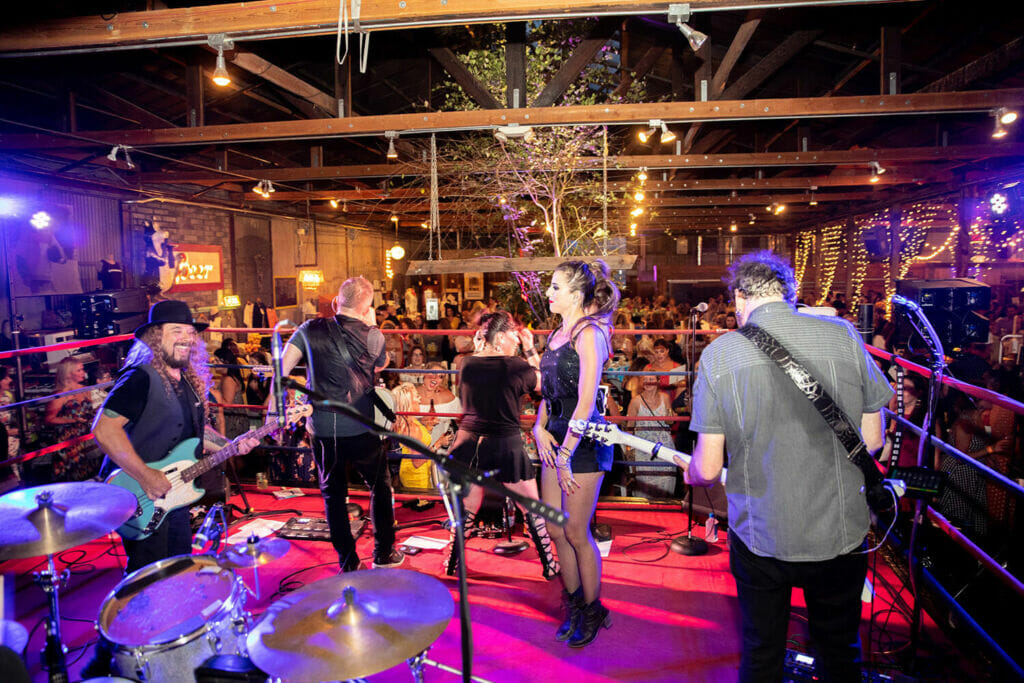
The Duce (525 S Central Avenue): Initially constructed in 1928, this property was a warehouse for manufacturing automotive bodies and a distribution center for Anheuser-Busch. The reimagined The Duce brought entertainment, good times, and still plenty of booze to the building in 2010. The venue offers staple services for public and private events, from concerts to weddings, watch parties for Phoenix Suns games, and even burlesque shows. They offer a full kitchen and bar to keep patrons returning for more, with hearty brunch, various entrées, and signature cocktails served out of mason jars.
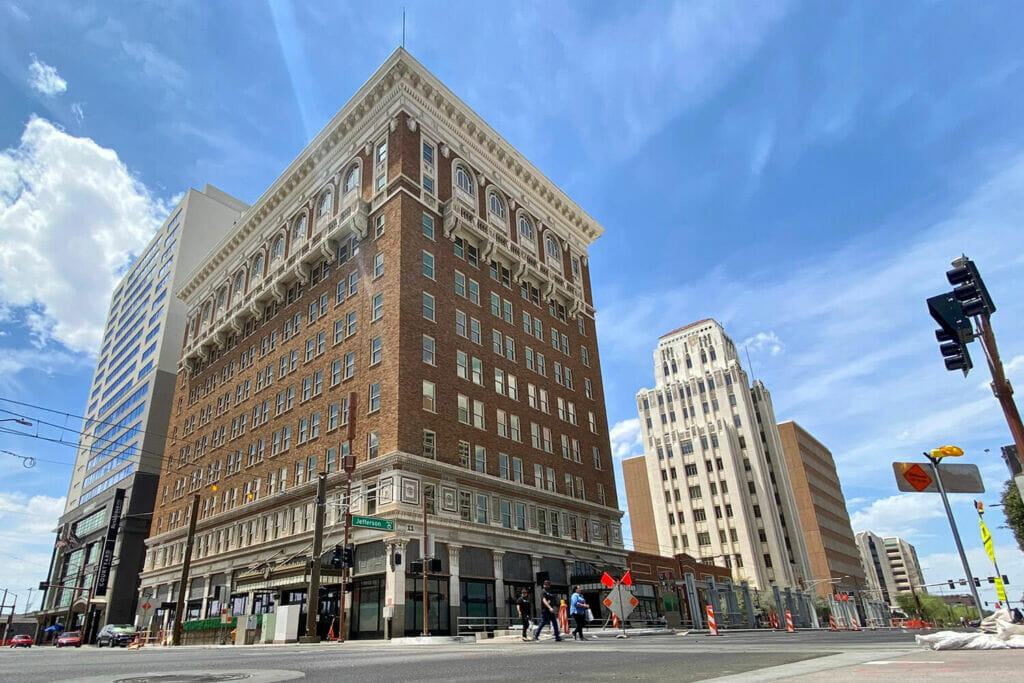
Luhrs Building / Luhrs Tower: When both structures were built in 1924 and 1929, each had noteworthy characteristics for Downtown and the surrounding region. For Instance, the Luhrs Building, completed by George Luhrs, Jr., was Phoenix’s first 10-story high-rise. Likewise, after its completion, the Luhrs Tower was the tallest building in the Southwest for decades.
Starting in 2007, prior owners, Hansji Corporation, began an extensive revitalization of the entire block, including the Luhrs Building and Luhrs Tower. In 2015, Lincoln Property Company further contributed to the evolution of the Luhrs complex with improvements to the pedestrian-level streetscape.
Today, ground-floor retailers such as Serafina Coffee Bar, Monroe’s Hot Chicken, and the renowned Bitter & Twisted Cocktail Parlor offer diverse food and beverage options to locals and visitors alike. This summer, Moxy Downtown Phoenix Hotel by PEG Companies is set to open on the first nine floors of the Luhrs Building. The building continues to serve as a stunning example of neo-classical architecture in today’s more modern landscape.
As the above examples show, not all adaptive reuse projects are created equal. Each building has challenges for property owners to overcome to revitalize an existing structure for new long-term use. But for every logistical and technical challenge, nothing stops creativity and determination. In other words, the basic tenants of Historic Preservation.

